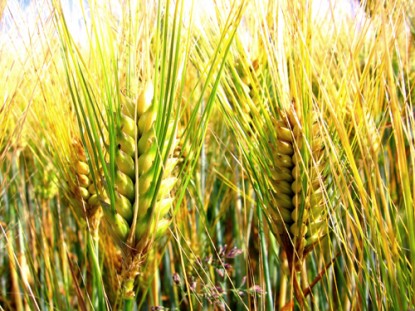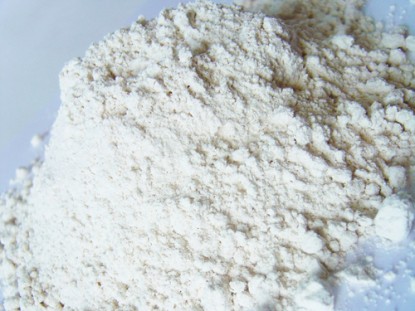Cookery 101: The Many Flours
Posted By CindyP On June 2, 2011 @ 1:03 am In Blog,Cookery 101,Ingredients | 18 Comments

Whether you’re making breads, cakes, cookies, pastries or pastas, one of the main ingredients is flour. There are so many different types flours and each is suited to different recipes. To get the best of your baking, it is important to know what the right flour is for the job (and therefore knowing how to substitute it with what you have)!

Whole-wheat flour is made from the whole kernel of wheat and is higher in dietary fiber and overall nutrient content than white flours. It does not have as high a gluten level, so often it’s mixed with all-purpose, bread flour or dough enhancer when making yeast breads.
A substitute for wheat flour: 7/8 cup all purpose flour plus 2 tablespoons wheat germ.

White flour is refined (stripped of the bran and germ) so it is lighter than whole wheat flour and has less fiber, fat, vitamins, and minerals. Enriched white flour has had B vitamins and iron added back in. Bleached white flour has less protein than unbleached white flour and is slightly acidic.
- All-purpose flour is the most common of the white flours. It is a blend of hard and soft wheat and can be either bleached or unbleached. It has between 8%-11% gluten content (bleached being the lower).
- Cake flour is fine-textured and made with bleached soft-wheat flour, giving it a high starch content. It has the lowest protein content of any wheat flour with a 8%-10% gluten content. Because it’s bleached, a cake sets faster and distributes fat more evenly through the batter to improve texture. When you’re making baked goods with a high ratio of sugar to flour, this flour will hold its rise better and will be less liable to collapse. Cake flour is an excellent choice if you want fine-textured cakes, quick breads, muffins or cookies.
A substitute for cake flour: For every 1 cup of all-purpose flour, add 2 tablespoons cornstarch.
- Bread flour is white flour made from hard, high-protein wheat. It has more gluten strength and protein content than all-purpose flour. It is unbleached and sometimes conditioned with ascorbic acid, which increases volume and creates better texture. Bread flour has 12% to 14% gluten. This is the best choice for anything you’re making with yeast.
A substitute for bread flour: For every 1 cup of unbleached all-purpose flour, add 1 tablespoon vital wheat gluten. For an even higher gluten content, add 2 tablespoons per cup.
- Self-rising flour is a low-protein flour with salt and baking powder already added. Biscuit and quick bread recipes may call for self-rising flour (while not calling for salt or baking powder).
A substitute for self-rising flour: 1 cup all-purpose flour plus 1 teaspoon baking powder, 1/2 teaspoon salt, and 1/4 teaspoon baking soda.
- Pastry flour is made with soft wheat. It’s a mix between all-purpose flour and cake flour. It has 9%-10% gluten. Recipes for biscuits, pie crusts, brownies, cookies or quick breads may call for pastry flour. Pastry flour makes a tender but crumbly pastry.
A substitute for pastry flour: Use 2 parts of all-purpose flour to 1 part of cake flour.
Semolina flour is made from durum wheat, the hardest type of wheat grown. This flour is highest in gluten, therefore highest in protein. It’s used in pastas and breads and can be used to thicken soups or stews. It can also be simmered briefly with raisins and honey for a hot cereal or can be cooked and prepared like Polenta.
A substitute for semolina flour: (in pastas and breads) use equal amounts of all-purpose flour, though the end product will be softer.
Rice flour is made from finely milled rice–either white or brown rice. In recent years, more rice flour is being used in cereals, crackers, chips, snacks, and coating or batter recipes for different texture.
A substitute for rice flour: Equal amounts of cake or pastry flour or grind rice with a spice grinder.
Oat flour is ground oats and is gluten free. This flour can be used in a wide variety of recipes, but baked goods will not rise or hold together. Oat flour must be mixed with other flours in baking, whether in a gluten free recipe or wanting to add to a regular recipe.
A substitute for oat flour: Use a spice grinder to grind oats of your choice.
Buckwheat flour is ground buckwheat. It has a rich, nutty flavor, is high in nutrition, and is gluten free.
A substitute for buckwheat flour: If gluten isn’t an issue, use 1:1 wheat flour mixed with ground flax (for flavor). If gluten is an issue, other flours such as oat or rice flours can be substituted 1:1.
I personally use all-purpose or whole-wheat flour for my baking, semolina flour for my pastas, and grind my own rice and oats for rice and oat flour. If a recipe calls for one of the other types of flours, I don’t hesitate to substitute or adapt. Knowing how each of the flours works in a recipe helps adapting the recipe for your own use.
All of the white flour substitutions have been added to Emergency Substitutions.
Cindy blogs at Chippewa Creek ~ Our Life Simplified. Do you have a recipe post or kitchen-related story to share on the Farm Bell blog? See Farm Bell Blog Submissions for information and to submit a post.
Want to subscribe to the Farm Bell blog? Go here.
Article printed from Farm Bell Recipes: https://farmbellrecipes.com
URL to article: https://farmbellrecipes.com/cookery-101-the-many-flours/
Click here to print.